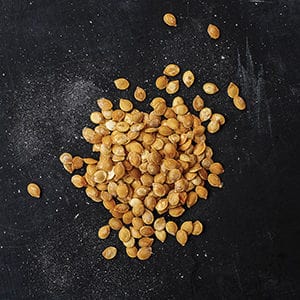By Ron Krupp
Editor’s note: Ron Krupp, author of “The Woodchuck’s Guide to Gardening,” “The Woodchuck Returns to Gardening” and “Lifting the Yoke,” is working on his third garden book, “The Woodchuck’s Guide to Landscape Plants and Ornamentals.”
When we plant a seed, we create a direct link between our ancestral past and our potential future. The seed we plant has traveled around the world, from farmer to farmer, from native populations to traders and conquerors to royalty and eventually back to farmers.
The carrot seed that we plant originated in Afghanistan, tomatoes and peppers in South America, potatoes in the Peruvian Andes, eggplant in central Asia, watermelon in tropical Africa. Most of our brassicas originated in the Mediterranean. Lettuce was first noted in Greek and Roman times. (“Romaine” is an adulteration of the word “Roman.”)
Peas are quite ancient: The oldest saved seed found at the Spirit Cave site on the Thai-Burmese border dates back to 9,750 B.C. Peas were also prevalent throughout the Mediterranean region to the Near East and central Africa. Their paths have led them in and out of popularity and through a long culinary history.
North America, the cultural melting pot, is also a wealth of genetic diversity. Seed traveled northward from Central and South America, carried along footpaths by native populations. It came with early European settlers, and later treasured seed from the old country came sewn into the hems, hatbands and suitcase linings of generations of immigrants, a piece of their culture. More recently, seed has come with the Vietnamese, Laotian and Haitian immigrants as well as from the former Soviet Union.
Over the last century, our increased dependence on seed companies has drastically reduced our direct links to our seed heritage. Small, regionally based seed companies like Fedco and Johnny’s in Maine and High Mowing in Vermont can offer varieties that perform well in the surrounding climate.
Of great concern are the immense multinational seed-chemical-pharmaceutical corporations that buy up the biggest companies that have bought out the midsize seed houses that have bought out the small regional companies. They control what seed gets grown and who can buy it. Local varieties that do thrive in our little frost pockets draw no attention from the corporate eye unless they have genetic traits of value to research.
Seed saving
We have all lamented the loss of a favorite variety, no longer available in any seed catalog. Even as self-sufficient home gardeners, our food supply is in the hands of the multinationals. One can only start to save the seed from those important varieties, or start to seek varieties that never were in a seed catalog.
Interest in saving seed is rising. This year Seed Savers Exchange had 991 of its members listing 19,622 varieties of seed, including 11,044 unique listings. Members are offering nearly twice the number of open pollinated varieties as does the entire mail order garden seed industry in the United States and Canada. Once again, home gardeners are the stewards of our genetic heritage.

Seed basics
Many of us start to save a few beans or tomato seed, and learn as we need more information. A few basics are helpful. Every plant has a botanical classification. Each vegetable belongs to a family: carrots, parsnips and parsley to the Umbelliferae; tomatoes, peppers, eggplant to Solanaceae; etc. Families are divided into genera with subdivisions being species. Lettuce, Lactuca sativa, is in the Compositae family, the Lactuca genus and sativa species. Plants of the same genus and species can potentially pollinate each other.
Plants are either self-pollinating or cross-pollinating. A self-pollinating plant has flowers that pollinate themselves, often before opening, or they pollinate another flower on the same plant. Insects are not strongly attracted to them. Cross-pollinating plants transfer pollen from one plant to another, by insect or wind. Male and female flowers form on the same plant or plants are entirely male or female. If growing two or more cross-pollinating plants of the same species, they need to be isolated from each other by specific distances.




